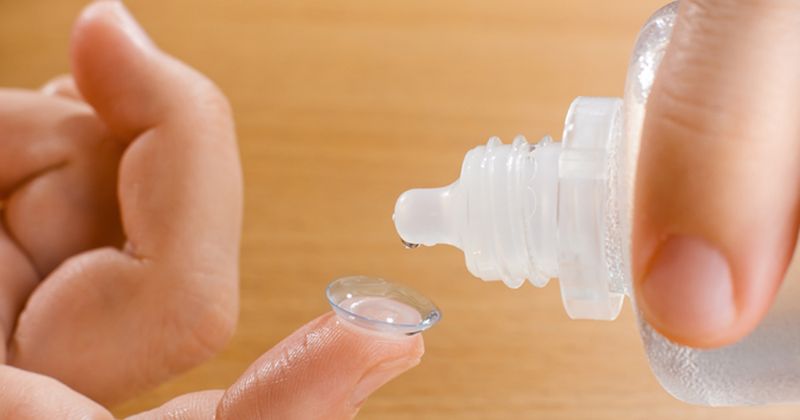Saline removes human coronavirus from various contact lens materials
Click Here to Manage Email Alerts
Human coronavirus was easily removed from soft and gas-permeable contact lens materials when rubbed or rinsed with only saline, according to a new study in Contact Lens and Anterior Eye.
“The ongoing COVID-19 pandemic has raised global attention with respect to viral transmission and the importance of disinfection and viral load reduction,” Christiane Lourenco Nogueira, PhD, a postdoctoral fellow in chemical engineering at the University of Waterloo in Canada, and colleagues wrote. “Even though ocular complications are not a common manifestation of coronavirus infections in humans, various studies have suggested that ocular exposure may represent a potential route of entry for SARS-CoV-2.

“Therefore, considering that viruses can be transferred by physical contact by the hands and fingers, it has been suggested that wearers of contact lenses are more at risk of developing COVID-19 during lens application and removal.”
With limited data on viral attachment to contact lens material and the potential for conjunctival transmission of SARS-CoV-2, Nogueira and colleagues sought to evaluate coronavirus attachment on a variety of contact lens materials, as well as the efficacy of a rub and rinse cleaning step in virus removal.
Researchers used two seasonal human coronaviruses — HCoV-229E and HcoV-OC43 — as SARS-CoV-2 surrogates and analyzed eight unworn soft contact lens materials, which included conventional hydrogel and silicone hydrogel, and four GP contact lens materials. They also evaluated the efficacy of Biotrue (Bausch + Lomb), Opti-Free Puremoist (Alcon), Clear Care (Alcon) and cleadew (Ophtecs) to remove viral contamination from two soft lens materials (etafilcon A and lotrafilcon B).
After soaking in 4 mL of D-PBS overnight, four sets of each lens material were incubated in human coronavirus suspensions for 6 hours. Each set was given a different treatment: no rinse or rub (briefly soaked in 4 mL D-PBS), rinse only (each side of lens rinsed with 4 mL D-PBS), rinse twice (each side rinsed twice with 4 mL D-PBS), and rinse and rub (each side rinsed with 4 mL D-PBS, rubbed in circular motion with a gloved 3D-printed “finger” and rinsed again with 4 mL D-PBS).
According to study results, approximately 102 to 103 infectious viral particles were recovered from each lens material after the no rinse or rub treatment. Researchers reported no detectable virus following the rinse only, rinse twice, and rinse and rub treatments.
Further, lens care products based on an oxidative disinfection system (Clear Care and cleadew) reduced the number of infectious viral particles that adhered to both conventional hydrogel and silicone hydrogel materials, while the nonoxidative disinfection systems (Biotrue and Opti-Free Puremoist) were only able to do so when additional rub and rinse steps were included.
“The results of this study have demonstrated that various CL [contact lens] materials were similarly prone to human coronavirus adhesion, which can be easily removed from CL surfaces when rubbed or rinsed with only saline,” Nogueira and colleagues concluded. “This study also demonstrated the importance of following the disinfection regimens of CL care products to remove infectious coronaviruses from CL surfaces that can potentially lead to human infections.”
They added, “The efficacy of CL care products based on nonoxidative disinfection systems against the viruses examined can be improved by ensuring that a rub and rinse step is used prior to overnight disinfection.”
